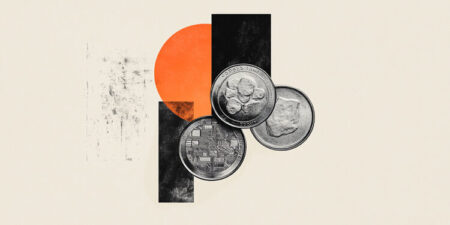Here is what you need to know on Friday, August 8:
The US Dollar (USD) stays resilient against its rivals early Friday, with the USD Index stabilizing slightly above 98.00. The US economic calendar will not feature any high-impact macroeconomic data releases, allowing investors to stay focused on comments from Federal Reserve (Fed) officials heading into the weekend. Later in the day, Statistics Canada will publish employment data for July.
US Dollar PRICE This week
The table below shows the percentage change of US Dollar (USD) against listed major currencies this week. US Dollar was the weakest against the British Pound.
| USD | EUR | GBP | JPY | CAD | AUD | NZD | CHF | |
|---|---|---|---|---|---|---|---|---|
| USD | -0.58% | -1.22% | 0.01% | -0.37% | -0.82% | -0.92% | 0.24% | |
| EUR | 0.58% | -0.59% | 0.62% | 0.22% | -0.38% | -0.36% | 0.81% | |
| GBP | 1.22% | 0.59% | 1.23% | 0.81% | 0.22% | 0.23% | 1.41% | |
| JPY | -0.01% | -0.62% | -1.23% | -0.36% | -0.98% | -0.94% | 0.39% | |
| CAD | 0.37% | -0.22% | -0.81% | 0.36% | -0.62% | -0.56% | 0.59% | |
| AUD | 0.82% | 0.38% | -0.22% | 0.98% | 0.62% | 0.02% | 1.19% | |
| NZD | 0.92% | 0.36% | -0.23% | 0.94% | 0.56% | -0.02% | 1.16% | |
| CHF | -0.24% | -0.81% | -1.41% | -0.39% | -0.59% | -1.19% | -1.16% |
The heat map shows percentage changes of major currencies against each other. The base currency is picked from the left column, while the quote currency is picked from the top row. For example, if you pick the US Dollar from the left column and move along the horizontal line to the Japanese Yen, the percentage change displayed in the box will represent USD (base)/JPY (quote).
The USD Index registered small losses on Thursday as GBP/USD rallied following the Bank of England (BoE) event, suggesting that Pound Sterling captured capital outflows out of the USD. The BoE announced that it lowered the policy rate by 25 basis points (bps), as expected, after the August meeting. Policymakers voted 5-4 in favor of the rate cut after the second round of voting, while markets were expecting only two officials to vote for a hold. In the post-meeting press conference, BoE Governor Andrew Bailey said that it is important that they do not cut the policy rate too quickly or too much. GBP/USD rose more than 0.6% on Thursday and reached its highest level since July 28 above 1.3400. Early Friday, the pair consolidates its weekly gains and trades slightly below 1.3450.
In the meantime, citing unnamed sources, Bloomberg reported late Thursday that Fed Governor Christopher Waller, who dissented at the July meeting by voting for a 25 bps rate cut, is the front-running candidate to replace Fed Chairman Jerome Powell. According to the report, US President Donald Trump is planning to make the announcement by the end of the summer.
After fluctuating in a relatively tight channel in the first half of the week, Gold gathered bullish momentum and rose 0.8% on Thursday. XAU/USD holds its ground in the European session on Friday and trades slightly above $3,400.
Following Wednesday’s climb, EUR/USD continued to edge higher on Thursday but struggled to preserve its bullish momentum. After coming within a touching distance of 1.1700, EUR/USD corrected lower to close the day virtually unchanged. Early Friday, EUR/USD moves sideways at around 1.1650.
USD/JPY stays in a consolidation phase above 147.00 in the European session on Friday. Japanese trade envoy Ryosei Akazawa said on Friday that the US has agreed to correct a presidential order on tariffs and refund any excess duties collected in error. Akazawa added that there was no disagreement between the US and Japan over reciprocal tariffs.
USD/CAD stays under modest bearish pressure and trades below 1.3750 in the European morning. The Unemployment Rate is forecast to edge higher to 7% in July from 6.9% in June.
Fed FAQs
Monetary policy in the US is shaped by the Federal Reserve (Fed). The Fed has two mandates: to achieve price stability and foster full employment. Its primary tool to achieve these goals is by adjusting interest rates.
When prices are rising too quickly and inflation is above the Fed’s 2% target, it raises interest rates, increasing borrowing costs throughout the economy. This results in a stronger US Dollar (USD) as it makes the US a more attractive place for international investors to park their money.
When inflation falls below 2% or the Unemployment Rate is too high, the Fed may lower interest rates to encourage borrowing, which weighs on the Greenback.
The Federal Reserve (Fed) holds eight policy meetings a year, where the Federal Open Market Committee (FOMC) assesses economic conditions and makes monetary policy decisions.
The FOMC is attended by twelve Fed officials – the seven members of the Board of Governors, the president of the Federal Reserve Bank of New York, and four of the remaining eleven regional Reserve Bank presidents, who serve one-year terms on a rotating basis.
In extreme situations, the Federal Reserve may resort to a policy named Quantitative Easing (QE). QE is the process by which the Fed substantially increases the flow of credit in a stuck financial system.
It is a non-standard policy measure used during crises or when inflation is extremely low. It was the Fed’s weapon of choice during the Great Financial Crisis in 2008. It involves the Fed printing more Dollars and using them to buy high grade bonds from financial institutions. QE usually weakens the US Dollar.
Quantitative tightening (QT) is the reverse process of QE, whereby the Federal Reserve stops buying bonds from financial institutions and does not reinvest the principal from the bonds it holds maturing, to purchase new bonds. It is usually positive for the value of the US Dollar.
Read the full article here















